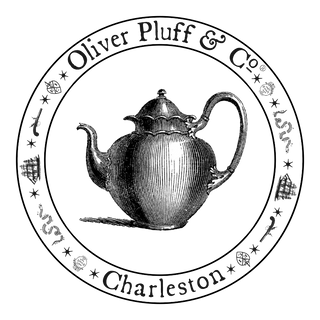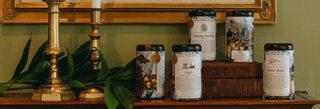
The tea caddy would be the first piece of tea equipage received when purchasing tea. The canisters are referred to as caddies from the Malayan word kati, which measure out 1.2 pounds. Caddies were exported from China and made of silver, tortoise shell, carved ivory, and lacquer. In contrast, when the British began making their own caddies, mahogany, rosewood, satinwood, and glass were used. [2] In the colony of Pennsylvania, James Logan would receive his tea inside tea-caddies.
Tea merchants provided tea caddies with the purchase of tea. In 1699, at the age of twenty-five, James Logan came to the American colonies from England with William Penn and settled in the colony of Pennsylvania. Shipments of tea were arriving in England by the early 18th century; by 1713, James Logan was able to place tea orders from his London agent to be shipped to Pennsylvania inside tea caddies, ordering “1/2 pound ye best Bohea (a black tea) and as much fine green Tea with 2lbs of coffee”.
Tea was not just a beverage; tea was an event, a performance requiring certain manners and much equipage. The founder of Philadelphia, Englishman William Penn, stated in 1682 that people drank tea because it filled “the cups that cheer but not inebriate”. [3] Tea was respected with a ceremony-like ritual for its connotations of luxury, grace, and civility. As such, the presentation of a colonist’s tea table was of the utmost importance. As represented by the inventories from future president George Washington’s household in the 18th century, a proper tea table required a kettle, urn, tea caddies, teaspoons, and cups and saucers in order to serve tea.[4] Sugar tongs were also part of the tea equipage; used to serve sugar lumps, these tongs came in three different forms called fire-, bow-, or scissor-tongs. Other equipage needed, like teapots and saucers, were imported from China for Europeans and colonists in the 17th century. European and colonial American potters were so fascinated with Chinese porcelain that it spurred their ambition to produce similar porcelain. The translucent and pure whiteness of Chinese porcelain captivated the Europeans and colonists. However, porcelain manufacturers struggled to find the Chinese secret to creating porcelain teapots that would not crack from the boiling water.[5]
In England, the Royal Worcester Porcelain Factory used soapstone to create porcelain teapots that would not crack from the heat of boiling water. Consumers also needed vessels to hold tea condiments, so in addition to European and colonial potters creating equipage from porcelain, silversmiths did the same using silver. Before the 18th century, silversmiths had not had such a demand for silver containers to hold the likes of sugar, milk, or tea.[6] The most well-known colonial silversmith of the time was the famous Boston patriot, Paul Revere Jr. As a silversmith, Revere created tea equipage pieces such as sugar bowls, cream pitchers, and teapots, and also did the fashioning and engraving himself.[7] One of Paul Revere’s many works as a silversmith was his silver teapot in the neo-classic design.[8] Proper heat-conditioned tea equipage made from silver and porcelain were in high demand but other materials were also suitable, such as Sheffield plate. In Staffordshire, England, the famous potter named Josiah Wedgwood manufactured high volumes of tea equipage made in glazed stoneware.[9] Among other English potters, ceramic teapots were made using stoneware and earthenware.[10]


